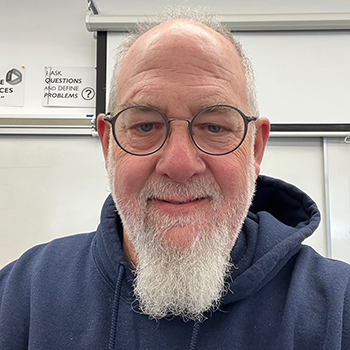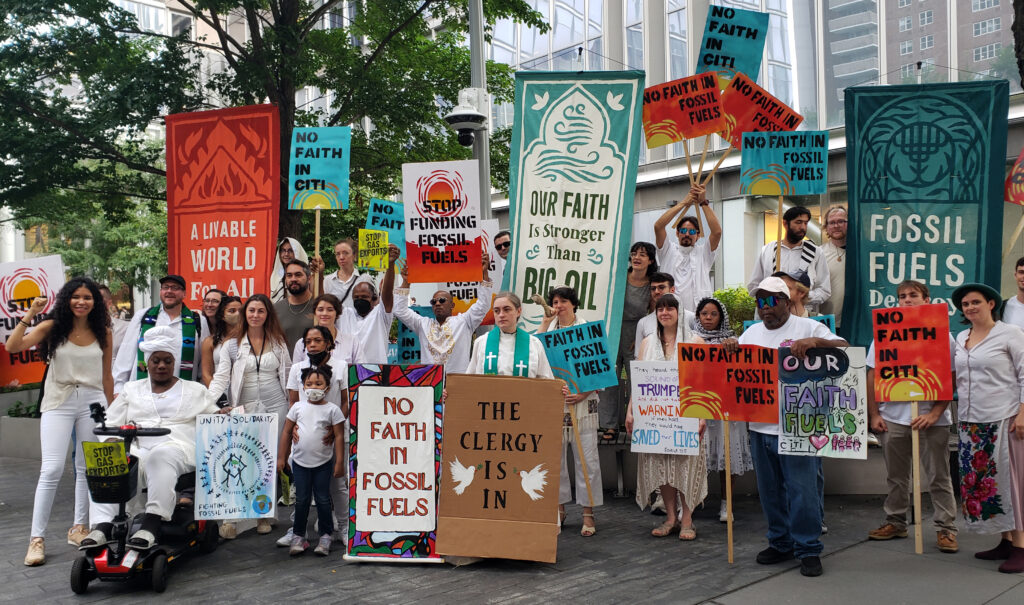How one temple in California made the move to transition investments away from fossil fuels
by Andrew Goldenkranz
Cross-posted from the blog of Union for Reform Judaism, February 10, 2025
In April 2024, after two years of study and engagement with many internal and external partners, the Union for Reform Judaism passed a landmark resolution calling on Reform Jewish individuals, congregations and our communal institutions to transition our investments, pensions, and endowments away from fossil fuel interests.
I served as treasurer of Temple Beth El in Aptos, California, and was on the national task force that prepared the URJ resolution. Since then, we’ve learned some harsh lessons. From the devastating Hurricane Helene in North Carolina in September 2024 and the terrible California wildfires in early January 2025, we see that climate change impacts are accelerating. What we used to think of as future events have become our current reality.
“Climate change’s impacts are being felt in communities worldwide,” Jennifer Brodkey Kaufman, chair of URJ’s North American board, said. “We have the ability and responsibility to use our dollars to make a positive difference on climate, rather than to continue funding investment in damaging fossil fuels.”
The URJ found that the process of implementing this transition will be different for every congregation based on membership, financial needs, regional culture, and local economy. During our national consultation, we included leaders from across the US and Canada and intentionally listened to different perspectives.
We learned that the fossil fuel economy is complex. There are direct investments (like Exxon stock); indirect investments in banks, mutual funds, insurance companies or other financers; and suppliers and vendors. The URJ’s resolution called for divestment in the first case; possible shareholder engagement in the second case; and refrained from parsing the third category at all.
I am sharing this case study based on our experience at Temple Beth El in Aptos, California to inspire other congregations. We are a medium congregation with diverse membership on the coast near Silicon Valley. I was TBE’s treasurer as we studied, engaged, and decided to divest from fossil fuels. Most of this took place before the URJ decision, and our work enabled me to contribute to the URJ’s initiative.
Before looking at investments, we implemented a temple-wide “greening process” that included addressing building issues like solar panels, changing light bulbs, upgrading our bathrooms to low-flow appliances, and other initiatives; instituting kitchen practices such as food waste composting and reducing our use of plastic; and creating curriculum and activities for our school, youth group, and summer programs.
These steps helped put our financial decisions in a larger context of our congregation’s role in the community. We never expected perfection, but we stressed the opportunity to improve and taking safe steps. In many cases, we saved or even made money in the process. For example, our solar installation was revenue-positive from the start (California is pretty friendly to rooftop solar).
To address our investment strategy, I joined with our president and senior rabbi to plan for a board-level discussion on investment strategies. We used examples such as tobacco, guns, and child labor violators to spark a conversation about investment and our Jewish values. We also discussed divestment vs. community investment, or “screening out vs. screening in.” We assessed our risk/reward comfort level. Would fossil fuel divestment break even, lose a bunch of money, or potentially make more money over time?
Working with senior leadership and our finance committee, we agreed on a safety-first approach. We have a mix of 6-24 month CDs, liquid accounts, and a long-term endowment that averages about a 4% return per year. We could neither afford to lose money, nor risk the perception that we were risking our financial stability for a politicized agenda.
Fortunately, we had willing partners to help us with the research and look at alternatives with us. We took this learning to our investment advisor and the local community foundation. We used some already established toolkits and screening databases such as As You Sow. We were intentional in asking our advisors whether there was low-hanging fruit that we could transition quickly, or certain funds or asset classes that we needed to phase in or study more.
We had good news early on: The community foundation, which held our largest account, already had a socially responsible fund that paid the same as their other low-risk portfolios, so that transition happened quickly and easily. For our CD holdings (about $500,000), our investment manager recommended that we analyze and potentially redirect them as they came up for renewal. She helped us secure information about the different options, their ESG (environmental, social, and governance) impacts, and their return guarantees. For our liquid bank holdings for cash flow and payroll needs, we ended up resolving to make sure our accounts were mostly in local banks or credit unions where we knew there would be greater accountability.
After five years, we have continued to earn interest comparable to before the transition and have not lost money on any fund. Our most recent analysis showed that we are about 90% divested away from fossil fuels. Working with our executive director, we provide reports to the board twice a year. We also remind the temple board of the right to maneuver as needs change or in volatile situations, such as a 2008-style financial emergency.
Our basic trajectory was to engage collaboratively; study; consult; pilot some easy-to-make decisions; assess results; make more decisions; and keep reporting on results and new opportunities. We put our investment strategy in context of other temple practices and our history. We also understood this work as an impactful form of climate action – as the URJ’s resolution states, “A key piece of keeping fossil fuels in the ground and unburned is to stop the money that is keeping the industry afloat.”
Perfection is an elusive goal, but continuous improvement consistent with fiduciary responsibility is quite achievable. Include all sectors of your congregational community to make sure your decisions reflect the broadest intent. And don’t give up. Our case took about two to three years to implement. You can do this!

Andrew Goldenkranz
Andrew Goldenkranz is the former treasurer of Temple Beth El in Aptos, California and served on the Commission on Social Action national task force that studied and prepared the URJ resolution on fossil fuel divestment.
About Dayenu’s program to cut off funding for fossil fuel projects
Big banks and asset managers invest trillions of dollars in oil, gas, and coal companies that are fueling the climate crisis. Investors can help drive the solutions to climate change – but only if they leave behind destruction and invest in a clean energy future.
Dayenu played a crucial role in helping the URJ make the decision to move money out of fossil fuels. Please explore our program and take action with us!

